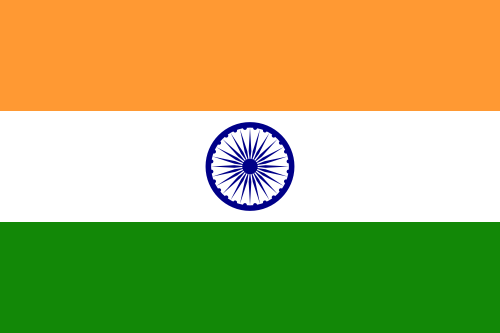India is an amazing country with a population of over 1.3 billion people. It is known for its diverse cultures, languages, and religions. The country boasts the majestic Himalayas, the sacred Ganges River, and iconic landmarks such as the Taj Mahal. India’s bustling cities, tranquil countryside, vibrant festivals, and diverse cuisine make it a land of contrasts and a fascinating destination for travelers.
List of important National and Public Holidays in India for the year 2024
- Republic Day: Friday, 26 January 2024
- Holi: Monday, 25 March 2024
- Good Friday: Friday, 29 March 2024
- Id-ul-Fitr: Thursday, 11 April 2024
- Ram Navami: Wednesday, 17 April 2024
- Mahavir Jayanti: Sunday, 21 April 2024
- Buddha Purnima: Thursday, 23 May 2024
- Id-ul-Zuha (Bakrid): Monday, 17 June 2024
- Muharram: Wednesday, 17 July 2024
- Independence Day / Parsi New Year’s Day / Nauraj: Thursday, 15 August 2024
- Janamashtami (Vaishnva): Monday, 26 August 2024
- Milad-un-Nabi or Id-e-Milad (Birthday of Prophet Mohammad): Monday, 16 September 2024
- Mahatma Gandhi’s Birthday: Wednesday, 2 October 2024
- Dussehra: Saturday, 12 October 2024
- Diwali: Thursday, 31 October 2024
- Guru Nanak’s Birthday: Friday, 15 November 2024
- Christmas: Wednesday, 25 December 2024
Facts and Infos about India
- Population: 1.4 billion (UN, 2024)
- Capital: New Delhi
- Area: 3.1 million sq km (1.2 million sq miles)
- Money: 1 Indian Rupee = 100 paise
- Internet domain: .in
- International dialling code: +91

History
- Ancient Civilization: India is home to one of the world’s oldest civilizations, the Indus Valley Civilization (around 2500 BCE), known for advanced urban planning and architecture.
- Vedic Period: The Vedic Period (around 1500-500 BCE) was marked by the composition of the Vedas, forming the basis of Hindu culture and philosophy.
- Maurya and Gupta Empires: These were significant periods of political unity and cultural and scientific advancements, with rulers like Ashoka and the flourishing of arts, literature, and mathematics.
- Mughal Empire: From the 16th to the 19th century, India was largely ruled by the Mughals, known for architectural wonders like the Taj Mahal and a syncretic culture blending Persian and Indian elements.
Geography
- Diverse Landscapes: India’s geography ranges from the Himalayan mountain range in the north to the coastal plains in the south, deserts in the west (Rajasthan), and lush forests in the east.
- Climate: It has a varied climate, from the tropical south to the temperate north. The monsoon season plays a crucial role in its agriculture and lifestyle.
- Biodiversity: India is a biodiversity hotspot, with numerous national parks and wildlife sanctuaries housing species like Bengal tigers, Indian elephants, and rhinoceros.
Culture
- Languages and Ethnicities: India is incredibly diverse, with over 2,000 distinct ethnic groups and more than 1,600 languages spoken, with Hindi and English being the most widely used.
- Religions: It’s the birthplace of Hinduism, Buddhism, Jainism, and Sikhism, while also having significant populations of Muslims, Christians, and other religious groups.
- Festivals and Cuisine: Diverse festivals like Diwali, Holi, Eid, and Christmas are celebrated. Indian cuisine is renowned for its variety and use of spices, differing significantly from north to south.
Economy
- Agriculture: It’s a key sector, employing nearly 50% of the Indian population, with major crops including rice, wheat, and spices.
- Industry and Services: India has a growing IT sector, significant manufacturing industries (automobiles, textiles), and a burgeoning service sector.
- Economic Reforms: Post-1991 economic liberalization opened India to global markets, leading to rapid economic growth and making it one of the world’s fastest-growing major economies.

Politics
- Democratic Structure: India is the world’s largest democracy, with a multi-tiered government structure. It has a President (head of state), a Prime Minister (head of government), and a bicameral parliament.
- Constitution: Adopted in 1950, it lays out a federal structure and is known for its extensive civil liberties.
- Political Parties: There are numerous political parties, with the Indian National Congress and Bharatiya Janata Party being the most prominent.
Society
- Population: With almost 1.5 billion people, it is currently the second-most populous country in the world, expected to surpass China soon.
- Education and Healthcare: There have been significant improvements in literacy rates and healthcare access, though challenges remain in quality and reach, especially in rural areas.
- Social Issues: India faces issues like poverty, corruption, gender inequality, and environmental challenges. However, there are ongoing efforts and movements to address these problems.
Science and Technology
- Space Research: The Indian Space Research Organisation (ISRO) has launched various satellites and missions, including the Mars Orbiter Mission.
- Nuclear and Renewable Energy: India has a comprehensive nuclear energy program and is increasingly focusing on renewable sources like solar and wind.
Arts and Literature
- Classical Arts: India has a rich tradition in classical music (both Carnatic and Hindustani), dance (like Bharatanatyam, Kathak), and art (like Madhubani paintings).
- Literature: It has a diverse literary heritage in multiple languages, with ancient texts like the Mahabharata and Ramayana, and modern authors like Rabindranath Tagore and Salman Rushdie.
Sports
- Cricket: It’s a dominant sport, with widespread popularity and international success.
- Other Sports: Other sports like hockey (the national sport), football, and badminton also have significant followings.
International Relations
- Non-Aligned Movement: Historically, India was a leader in the Non-Aligned Movement during the Cold War.
- UN and Other Alliances: It’s a member of the UN, BRICS, G20, and seeks a greater role in global governance structures.
